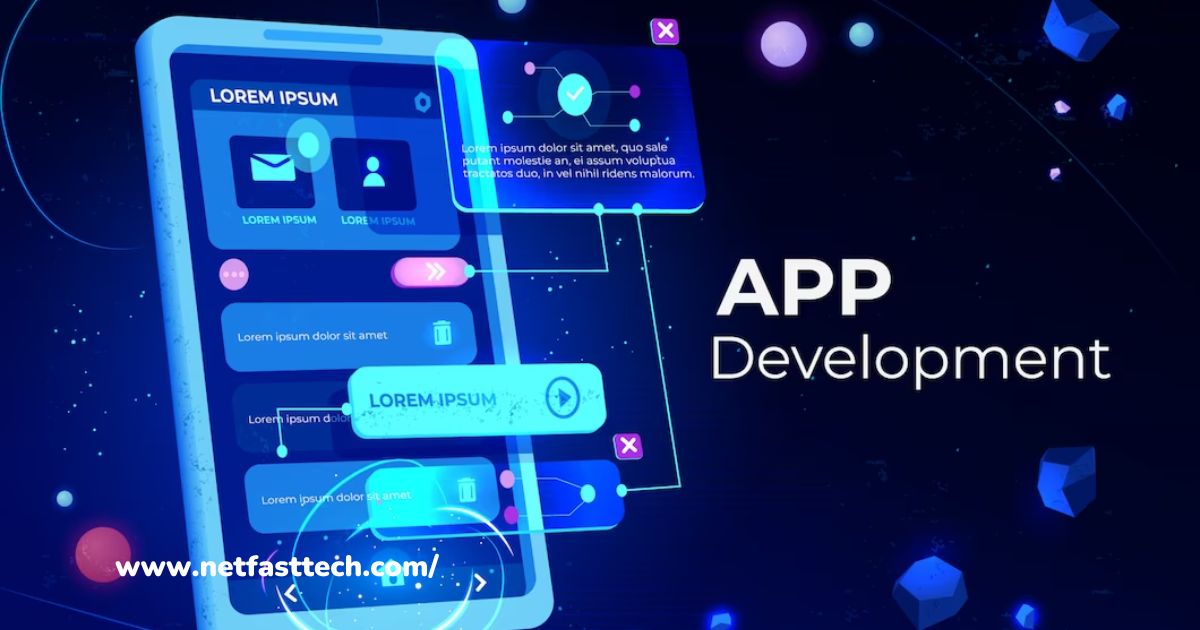The Ultimate Guide to Mobile App Development in 2023
In a world where the touch of a fingertip can summon a taxi, order a meal, or connect you with friends halfway across the globe, the magic that powers these experiences resides within the realm of mobile app development. Picture a canvas where ideas morph into interactive realities, where innovation dances hand in hand with technology. Welcome to the journey where imagination takes shape, where user experiences are meticulously crafted, and where the seemingly impossible becomes the norm. This guide is your key to unraveling the enigma of mobile app development, where we dive deep into the creation of digital companions that redefine the way we live, work, and play. So buckle up as we explore the universe of mobile apps, discovering not only what they are, but why they’ve become the heartbeat of our modern digital landscape.
The Different Types of Mobile Apps: Forging Pathways to Connectivity
Before we embark on this thrilling voyage of app creation, let’s pause to understand the diverse avenues that mobile apps traverse. Just as each brushstroke contributes to a masterpiece, various types of mobile apps add distinct strokes to the canvas of technology. From native apps that harness the full power of individual platforms to hybrid apps bridging the gap between efficiency and versatility, and web apps that embrace ubiquity, the choices are as boundless as the digital horizons they open. Join us as we delve into these app categories, each bringing its own color to the spectrum of innovation.
Benefits of Mobile App Development: Sculpting Experiences, Transforming Realities
Mobile app development isn’t just a technological endeavor; it’s a conduit for shaping experiences and redefining possibilities. This journey offers a treasure trove of benefits, from amplifying your brand’s reach and engagement to enhancing user convenience and satisfaction. Seamlessly integrating into the modern lifestyle, mobile apps empower businesses and individuals alike to create tangible impact. Let’s uncover how the art of app development can forge these invaluable connections, breathing life into ideas and aspirations.
Steps Involved in Mobile App Development
Creating a mobile app is akin to embarking on an epic quest, marked by strategic milestones and creative wizardry. The journey is multifaceted, encompassing ideation, design, development, testing, and deployment. Step by step, we’ll navigate the intricacies of translating a concept into code, bridging the gap between vision and reality. As we embark on this expedition, you’ll gain insights into the alchemy that turns ideas into immersive, functional digital realms.
1. Planning and Ideation: From Spark to Strategy
Every app journey begins with an idea, a spark of innovation that ignites the path ahead. Before a single line of code is written, careful planning is the cornerstone. This phase involves defining your app’s purpose, understanding your target audience, and outlining core features. The power of ideation lies in aligning your app’s vision with user needs, ensuring your creation resonates with its intended audience.
2. App Design and Wireframing: Sketching User-Friendly Experiences
Mobile app design transforms ideas into visual blueprints, dictating how users will interact with your creation. Wireframing takes center stage, offering a skeletal outline of your app’s interface. It’s the skeleton on which your app’s flesh is built, guiding developers and designers alike in creating a seamless, intuitive user experience. Think of it as mapping out the road that users will traverse, ensuring every turn is user-friendly and purposeful.
3. Development: Breathing Life into Code
Development is where the code comes to life, where lines of logic and creativity merge to create functional magic. This step involves selecting the right programming language, setting up the project structure, and meticulously crafting the features outlined in the planning phase. Each line of code represents a thought, a decision, and an action that contributes to the final masterpiece.
4. Testing and Debugging: Polishing the Gem
Before unveiling your creation to the world, it undergoes rigorous testing and debugging. This phase is like a magnifying glass that scrutinizes every nook and cranny for imperfections. Bugs are the little hiccups that can disrupt the user experience, and testing ensures your app runs smoothly on various devices and scenarios. Debugging, then, is the art of ironing out these creases, leaving behind a polished gem of functionality.
5. Deployment and Marketing: Unveiling to the World
The day has come to introduce your app to the world. Deployment involves preparing your app for the app stores, adhering to their guidelines and requirements. But remember, simply launching your app isn’t enough; marketing is the beacon that guides users to your creation. Crafting a compelling app description, creating engaging visuals, and reaching out through social media are just a few ways to showcase your masterpiece to its intended audience.
The Different Platforms for Mobile App Development
As we set sail into the realm of mobile app development, the path you choose is determined by the platforms you wish to conquer. Each platform comes with its unique audience and opportunities. Let’s briefly explore the landscapes awaiting your creative touch:
iOS: The Apple Ecosystem
Renowned for its sleek design and user experience.
High user engagement and strong monetization potential.
Developed using Swift or Objective-C programming languages.
Android: The Versatile Giant
Boasts the largest market share globally.
Offers diverse device options, from budget to premium.
Developed using Kotlin or Java programming languages.
Windows Phone: Microsoft’s Domain
Known for its unique Live Tile interface.
Smaller market share but loyal user base.
Developed using C# programming language
Tizen: Samsung’s Endeavor
Samsung’s in-house platform for various devices.
Often used in smartwatches, TVs, and other electronics.
Developed using HTML5 and JavaScript
Other Platforms: Exploring Unconventional Paths
Niche platforms like Sailfish OS and Ubuntu Touch.
Limited market presence but potential for specialized apps.
Choosing the right platform involves understanding your target audience, budget, and goals. Each platform offers a unique opportunity to make your mark in the mobile landscape.
The Cost of Mobile App Development
Creating a mobile app is a journey that requires resources, and one crucial aspect is the cost. Understanding the financial implications ensures that your project stays on track. Let’s delve into the factors that influence the cost of mobile app development and explore how to estimate expenses.
Factors Affecting the Cost: Balancing the Equation
The cost of app development varies based on a myriad of factors. The complexity of features, app design intricacy, the platform you’re targeting, and the level of customization all play a role in shaping the budget. Additionally, app maintenance, updates, and ongoing support contribute to the overall cost. Being aware of these variables empowers you to make informed decisions.
How to Estimate the Cost of Your Mobile App: Charting Your Financial Course
Estimating the cost of your mobile app involves breaking down your project into components. You’ll need to consider design costs, development expenses, testing resources, and potential post-launch maintenance. Researching industry averages, seeking quotations from developers, and factoring in potential contingencies will help you arrive at a reasonable budget. Remember, setting a realistic budget paves the way for a smoother development journey.
The Marketing and Promotion of Mobile Apps: Shining a Spotlight
Creating an outstanding app is only half the battle; the other half involves letting the world know about it. Effective digital marketing and promotion strategies ensure that your app doesn’t get lost in the sea of digital offerings.
How to Market Your Mobile App: Crafting an Outreach Strategy
Marketing your mobile app involves telling its story to the right audience. Identifying your target demographic, understanding their preferences, and finding the platforms they frequent are key steps. Utilizing app store optimization (ASO), social media campaigns, and influencer collaborations can help your app gain visibility and traction.
How to Promote Your Mobile App
Promotion is about creating a buzz around your app, enticing users to engage and share. Engaging teaser campaigns, video trailers, and interactive content can capture attention and generate curiosity. Leveraging user testimonials and reviews, along with special launch offers, can further drive interest and downloads.
The Future of Mobile App Development
The world of mobile app development is ever-evolving. As technology advances, so do the possibilities. From the integration of AI and machine learning to the rise of augmented and virtual reality experiences, the future holds promises of unprecedented innovation. Staying updated, embracing emerging technologies, and continually enhancing user experiences will be the guiding principles for app creators.
Emerging Trends in Mobile App Development: Navigating Tomorrow’s Horizons
The landscape of mobile app development is in a perpetual state of transformation. Emerging trends shape the direction of innovation, giving rise to new possibilities. From the growth of progressive web apps (PWAs) that bridge the gap between web and native apps, to the increased focus on personalization and user-centric experiences, staying attuned to these shifts opens doors to unique opportunities.
How to Stay Ahead of the Curve in Mobile App Development: Embracing Change
Stagnation is the enemy of innovation. Staying ahead of the curve involves a commitment to learning and adaptation. Embrace continuous learning, attend industry conferences, and engage with developer communities. Invest in research and development to explore new technologies and methodologies. By fostering a culture of innovation, you position yourself to lead rather than follow.
Conclusion: The Tapestry of Possibilities
Mobile app development is a journey that combines creativity, technology, and user-centric design. It’s a testament to the power of human imagination and ingenuity. As you navigate the diverse terrain of planning, design, development, and marketing, remember that each decision you make weaves a thread into the tapestry of possibilities. The digital landscape is ever-evolving, but armed with knowledge and a passion for innovation, you have the tools to shape the future.
Partnering with NetFast Technologies: Turning Dreams into Reality
Embarking on a mobile app development journey can be a daunting task, but you don’t have to go it alone. NetFast Technologies, a leading Software development Company Melbourne, is here to guide you every step of the way. From conceptualization to creation, from promotion to marketing, our team of experts is dedicated to turning your app aspirations into reality. With a track record of delivering exceptional solutions, we offer a comprehensive suite of services tailored to your needs. Let us be your compass on this exciting voyage of app creation and innovation.



